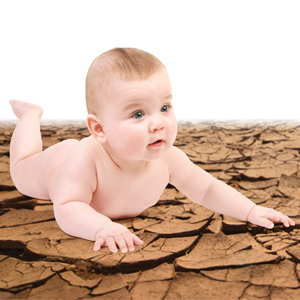 There’s a reason the phrase soft as a baby’s bottom is used to describe the smoothest, softest skin any of us will ever have. Aging brings skin changes, and despite the claims of makers and sellers of the many lotions and potions on the market, little can be done to permanently avoid the results of aging.
There’s a reason the phrase soft as a baby’s bottom is used to describe the smoothest, softest skin any of us will ever have. Aging brings skin changes, and despite the claims of makers and sellers of the many lotions and potions on the market, little can be done to permanently avoid the results of aging.
Our skin is the largest organ of our bodies and is vital for our survival. It is waterproof, helps us maintain body temperature, protects us from environmental dangers, and is a giant sensory organ connecting us to the outside world. It processes vitamin D to convert calcium into strong bone, and it is amazingly elastic and flexible.
Skin is a complex, layered organ with a sturdy waterproof outer layer called the epidermis. The epidermis constantly renews itself, with old cells sloughing off as new cells grow to replace them. Skin color comes from specialized cells called melanocytes at the base of the epidermis. The amount of melanin each of us has is mostly genetic, but anyone – even someone with very dark skin – is vulnerable to the serious dangers of UV light.
The dermis, just under the epidermis, is literally the nerve center of skin. Blood vessels, hair follicles, elastic fibers, oil and sweat glands, and nerve receptors are in the dermis. The specialized cells in the dermis delicately regulate body temperature by producing sweat when the body’s hot or shivering when it’s cold and sending information about the environment to the brain.
The deepest layer of skin is an insulating layer of fat under the dermis, acting as a shock absorber and extra source of fuel.
Like any living tissue, skin goes through inevitable changes as we age. Children are able to maintain that beautiful silken skin until early puberty but as grown-up hormones are produced, the epidermis thickens, the oil and sweat glands become larger and more active, and body hair starts to grow. Adolescents and the people who love them are well aware of the effects of oil and new lymature sweat glands as skin responds to other body changes. Acne is common.
Once we reach early adulthood, the skin has settled down somewhat, and is usually supple and strong. The trip through puberty has made the skin less soft and fine-grained than in childhood, but it is healthy and functioning at its best. As we approach middle age, however, the epidermis and dermis have gradually thinned, and some of the elastic fibers have disappeared, resulting in some skin wrinkling. This is usually most noticeable first on the face, particularly around the eyes.
As we progress into old age, our skin is quite thin, much less elastic, and wrinkles have formed just about everywhere. In the very old, the skin may appear almost transparent, with areas of darkening, sometimes called liver spots, and it can be very fragile, and subject to tearing or bruising very easily.
What can be done – if anything – to at least delay the changes associated with aging? While those lotions and potions can’t hurt you (they do help moisturize dry skin, after all, and may make you feel better about yourself) there are solid strategies to put into practice: always use smart sun protection; don’t smoke; and be sure to see a doctor if you see any changes in a birthmark, mole, or spot.
Parents should apply sunscreen with SPF of thirty or higher on young children and encourage kids to take over the task when they’re older. Also encourage your child to wear a hat, even on cloudy days. While your child might complain now, trust me, they will thank you later, because you have helped to reduce the effects of aging on their skin.
You may not always have skin as soft as the baby’s bottom, but you can keep your skin healthy for many years if you treat it with the respect your body’s largest – and most visible – organ deserves.



